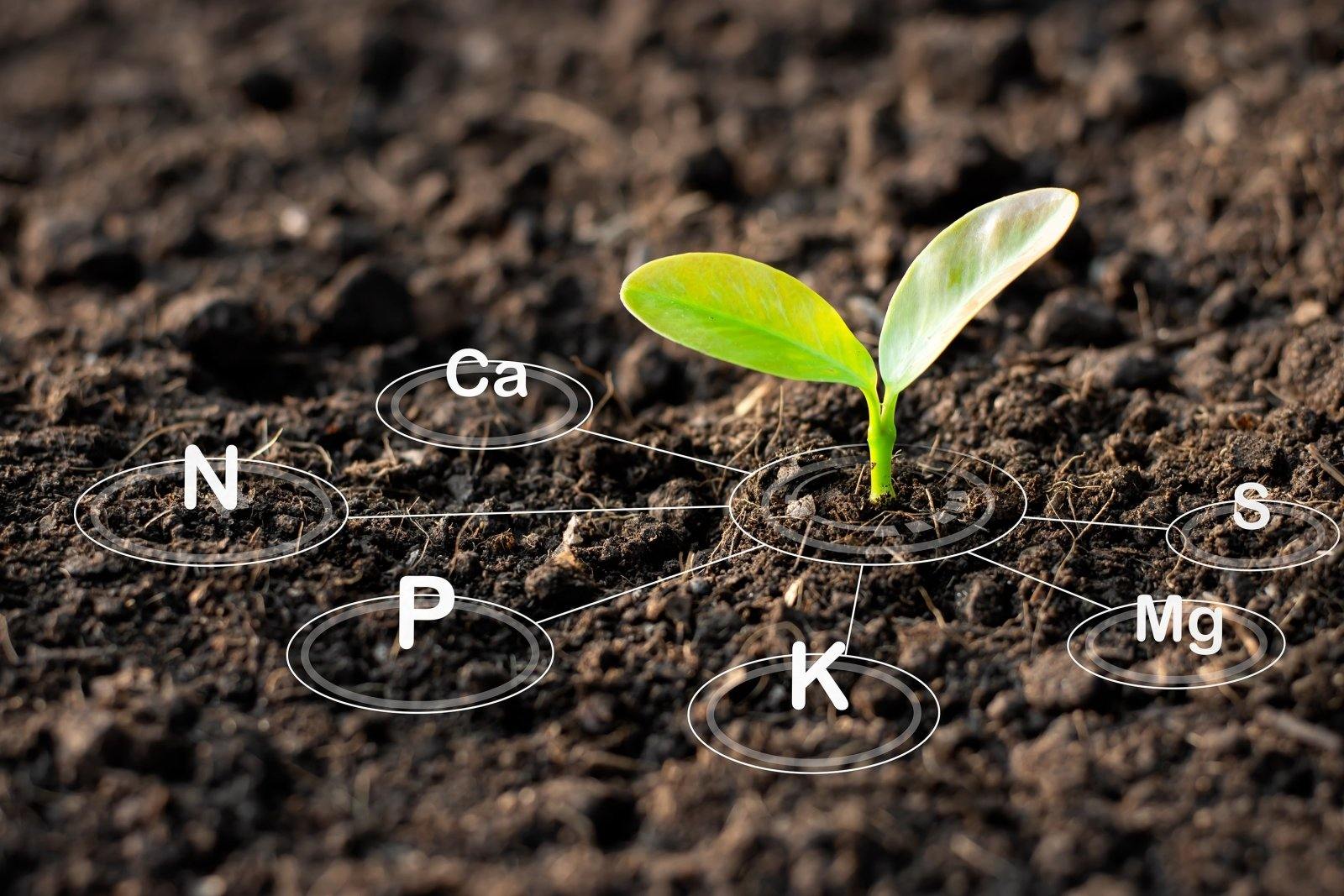Nutrient Mobility is a term used to describe the ability of nutrients to move within a given setting. Knowledge of nutrient mobility can help to determine what deficiency is occurring and also the root cause of the deficiency.
The mobility of a nutrient varies depending on whether it is within a plant or in the Below is a chart showing the mobility of nutrients in both soils and plants. Note how certain nutrients are mobile in soil, yet immobile once within the plant, and vice-versa.
|
Nutrient |
Requirement |
Non-ionic |
Cation (+) |
Anion (-) |
Soil Mobility |
Plant Mobility |
|
Carbon |
Basic |
CO2, H2CO3 |
n/a |
|||
|
Hydrogen |
Basic |
H2O |
H+ |
OH- |
n/a |
|
|
Oxygen |
Basic |
O2 |
n/a |
|||
|
Nitrogen |
Primary Macronutrient |
NH4+ |
NO3- |
Mobile as NO3-, immobile as NH4+ |
Mobile |
|
|
Phosphorus |
Primary Macronutrient |
HPO42-, H2PO4- |
Immobile |
Mobile |
||
|
Potassium |
Primary Macronutrient |
K+ |
Low Mobility |
Mobile |
||
|
Calcium |
Secondary Macronutrient |
Ca2+ |
Low Mobility |
Immobile |
||
|
Magnesium |
Secondary Macronutrient |
Mg2+ |
Immobile |
Mobile |
||
|
Sulfur |
Secondary Macronutrient |
SO4- |
Mobile |
Mobile |
||
|
Boron |
Mironutrient |
H3BO3 |
BO3- |
Mobile |
Immobile |
|
|
Copper |
Mironutrient |
Cu2+ |
Immobile |
Immobile |
||
|
Iron |
Mironutrient |
Fe2+, Fe3+ |
Immobile |
Immobile |
||
|
Manganese |
Mironutrient |
Mn2+ |
Mobile |
Immobile |
||
|
Zinc |
Mironutrient |
Zn2+ |
Immobile |
Immobile |
||
|
Molybdenum |
Mironutrient |
MoO4- |
Low Mobility |
Immobile |
||
|
Chlorine |
Mironutrient |
Cl- |
Mobile |
Mobile |
||
|
Cobalt |
Mironutrient |
Co2+ |
Low Mobility |
Immobile |
||
|
Nickel |
Mironutrient |
Ni2+ |
Low Mobility |
Mobile |
Soil Nutrient Mobility
For nutrients in soil to be available to plants, they must exist as ions - molecules with either a positive or negative charge. Ions are simply atoms or molecules with a charge, either positive or negative. Positively charged ions (+) are called Cations, while negatively charged ions are called Anions (-). The reason for why Boron is an exception to this is because it is available to plants in a non-ionic form (no charge). Mobility is impacted by whether the charge of a nutrient is +(Cation) or -(Anion) and also the strength of the charge as well.
As the saying goes, opposites attract - so, positively charged ions (Cations) typical bind to soil while negatively charged ions (Anions) are repelled by soil particles and float freely. These Anions(-) which are repelled by the soil particles float freely in the water in soil. The anions want to disperse themselves to even concentrations so they move from higher concentrations to lower concentrations.
The composition of soil is diverse, and varies from soil to soil. While the strength of a soil’s charge varies, soils generally maintain a negative charge with small pockets of positive charges intertwined. The strength of the soil charge is called the Cation Exchange Capacity which measures the number of cations that can be retained by soil particles. The higher the CEC, the more Cation nutrients that can be stored in the soil. So, higher CEC soils can become more nutrient rich.
There are exceptions to Anions being mobile in soil. Certain Anions bind tightly to soil particles. The most infamous one being Phosphorus which notoriously locks up to soil particles, becoming unavailable to plants.
What this means to growers is that the concentration of Anions will be equal throughout the soil - where the roots are, and where the roots aren’t. Anion deficiencies will therefore exist soil-wide, while Cation deficiencies exist when there isn’t adequate sources of the Cation directly in contact with the root zone, even if the soil as a whole is rich in that Cation.
Additionally, because Anions exist un-binded to soil particles and stay in solution floating around the soil particles, they can wash out of the soil much more easily. On the contrary, cations tend to bind to soil and don’t flush out with excessive watering or heavy rain. On the contrary, as a result, when facing an overabundance/toxicity of a nutrient - you can more easily flush out Cations than Anions.
Plant Nutrient Mobility
Once inside the plant, the mobility of which nutrients are mobile and immobile changes. Mobile nutrients have the ability to move from one place to another within the plant. The plant moves them to where they are most needed which is typically new growth. That is why mobile nutrient deficiencies show up first in old growth - the plant has pulled the mobile nutrients from the old growth to where they are more valuable - new growth. On the other hand, immobile nutrients are permanently positioned (or missing) from when that specific part of the plant has formed. Once they have been put in place, they are there to stay. So, when the plant is growing new shoots, buds, and leaves, if there is an inadequate availability of immobile nutrients available to the roots, deficiencies will show in the new growth as it is created. Additionally, the deficiencies can not be reversed at the sites where they occur.
References & Resources
- YouTube playlist - https://www.youtube.com/playlist?list=PLwkiTjZsf5HErZDaYAp-zWS51-OYtFFRA
- Cornell document - https://nrcca.cals.cornell.edu/soilFertilityCA/CA1/CA1_print.html
- https://ucanr.edu/sites/sdsmallfarms/files/248315.pdf
- https://en.wikipedia.org/wiki/Cation-exchange_capacity
- https://www.thedailygarden.us/garden-word-of-the-day/nutrient-mobility
- https://www.agronomy.k-state.edu/documents/nutrient-management/nmrg-soil-nutrients,-sources-and-uptake.pdf
- https://www.canr.msu.edu/news/knowing_nutrient_mobility_is_helpful_in_diagnosing_plant_nutrient_deficienc

